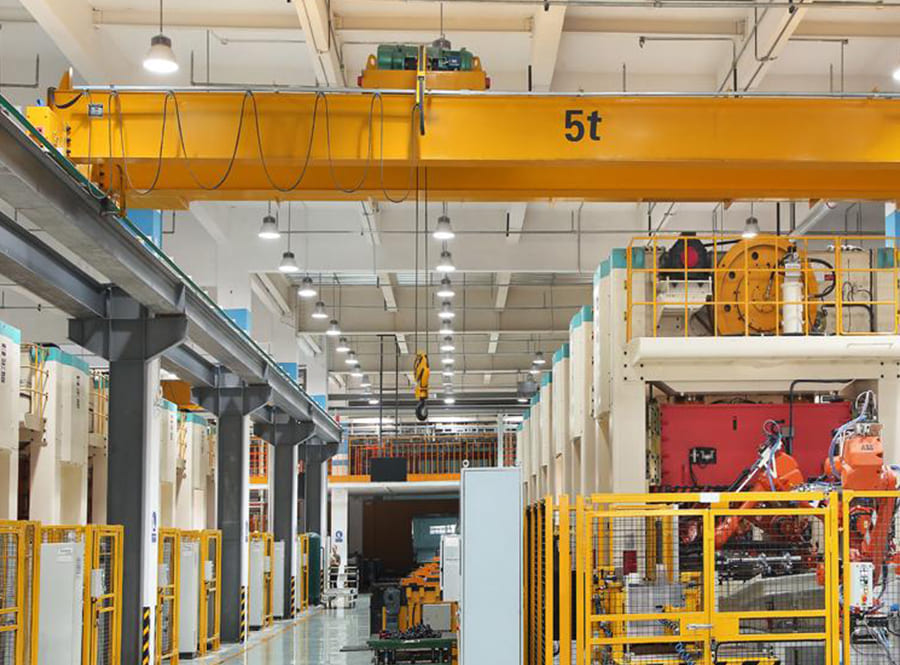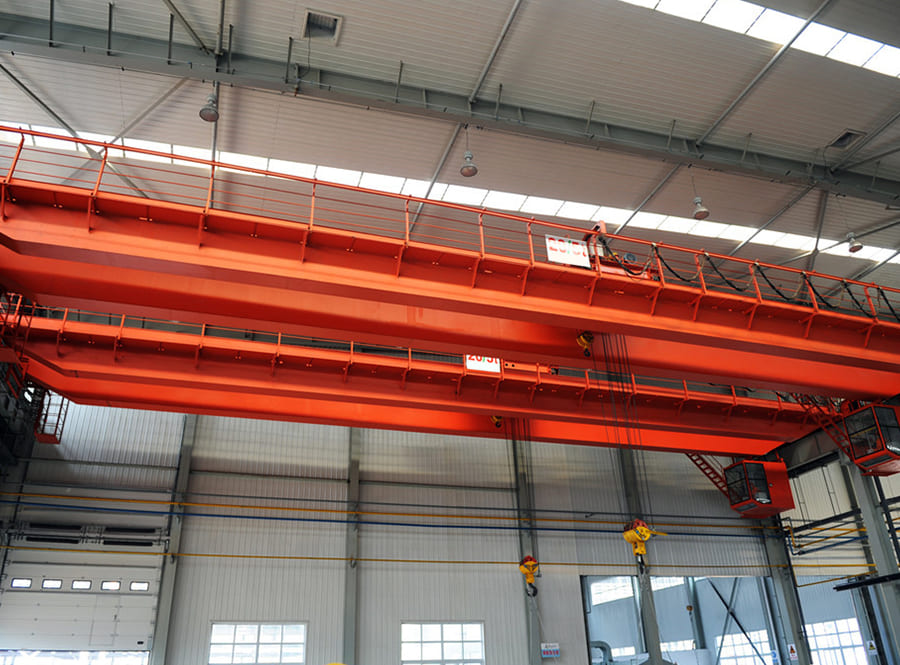SEVENCRANE underhung monorail crane is a major lifting and transportation equipment in the production logistics process, and its utilization efficiency is related to the production rhythm of the enterprise. At the same time, bridge cranes are also dangerous special equipment and may cause harm to people and property in the event of an accident.
The driver of the industrial underhung monorail crane is the most active and critical factor in the use of the overhead crane. The driver’s ability to operate the overhead crane is very important and is a major issue directly related to the company’s efficiency and safe production. The author summarizes his own practical experience in operating bridge cranes and puts forward the following operating experience based on the characteristics of bridge cranes.
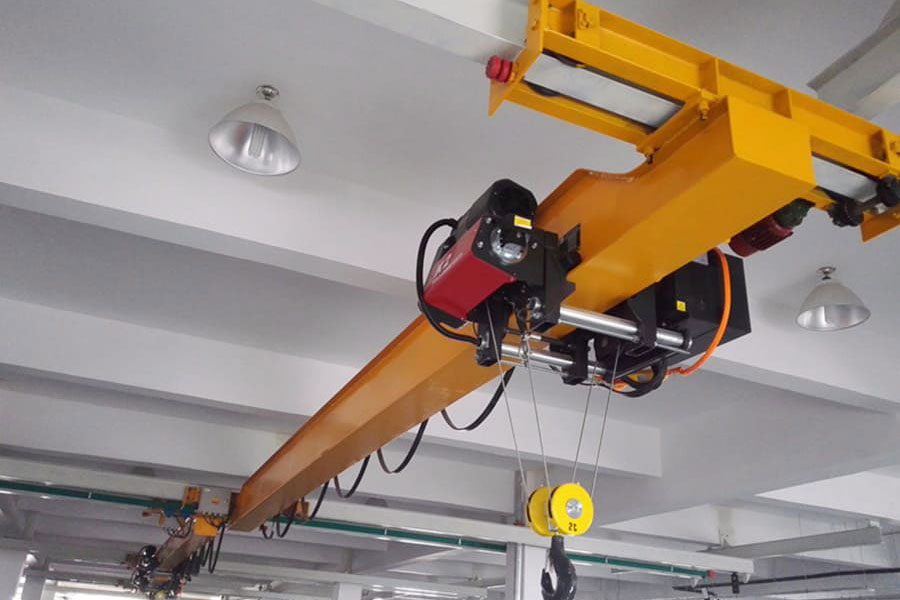
Master the characteristics of equipment and work objects
To correctly operate a bridge crane, you must carefully master key elements such as the equipment principle, equipment structure, equipment performance, equipment parameters, and operating process of the equipment you are operating. These key factors are closely related to the use and operation of this equipment.
1. Nắm vững nguyên lý thiết bị
Sự hiểu biết cẩn thận về các nguyên tắc là điều kiện tiên quyết và nền tảng để vận hành tốt thiết bị. Chỉ khi nắm vững nguyên tắc rõ ràng và sâu sắc, nền tảng lý luận được xác lập, sự hiểu biết mới có thể rõ ràng và sâu sắc, trình độ vận hành mới có thể đạt đến một tầm cao nhất định.
2. Nắm vững kết cấu thiết bị
Nắm vững kết cấu thiết bị đồng nghĩa với việc bạn phải hiểu và nắm vững các bộ phận kết cấu chính của cầu trục. Cầu trục là thiết bị đặc biệt và kết cấu của chúng có những đặc điểm riêng cần phải được hiểu và nắm vững một cách cẩn thận. Nắm vững cẩn thận cấu trúc thiết bị là chìa khóa để làm quen với thiết bị và điều khiển thiết bị một cách khéo léo.
3. Cẩn thận làm chủ hiệu suất thiết bị
To carefully grasp the performance of the equipment is to master the technical performance of each mechanism of the top 10 underhung monorail crane for sale, such as the power and mechanical performance of the motor, the characteristic braking state of the brake, and the safety and technical performance of the safety protection device, etc. Only by mastering the performance can we better take advantage of the situation, scientifically control the equipment, delay the deterioration process, and prevent and reduce the occurrence of failures.
4. Nắm vững thông số thiết bị
Nắm vững cẩn thận các thông số thiết bị có nghĩa là bạn phải hiểu và nắm vững các thông số kỹ thuật chính của cầu trục, bao gồm loại công việc, cấp độ công việc, sức nâng định mức, tốc độ làm việc của cơ cấu, nhịp, chiều cao nâng, v.v. thiết bị thường khác nhau. Tùy thuộc vào các thông số kỹ thuật của thiết bị mà hiệu suất của nó có sự khác biệt. Kiến thức cẩn thận về các giá trị thông số chính xác cho từng cần trục là rất quan trọng để vận hành thiết bị một cách chính xác.
5. Nắm vững quy trình làm việc
Carefully mastering the operating process means mastering the steps and processes of the production operations served by the cầu trục, and striving for the best design and reasonable operation of the lifting and transportation procedures used in various processes. Only by proficiently mastering the process flow can we master the operation rules, be confident and operate freely, so as to improve work efficiency, safety and reliability.
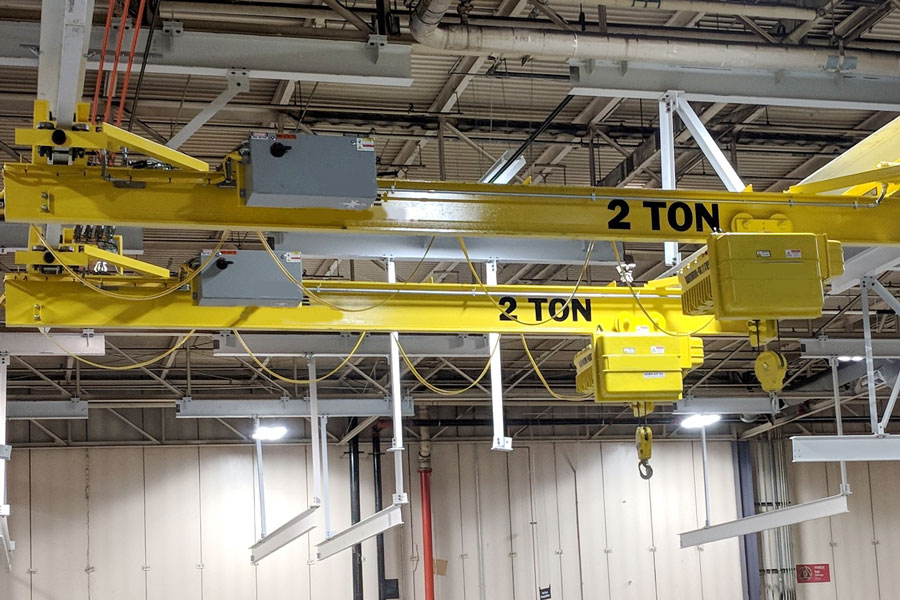
Grasp the status changes of the equipment
The warehouse underhung monorail crane cost is special equipment, and the operation and operation must ensure the technical status and intact condition of the bridge crane. During the operation of bridge cranes, they are affected by factors such as production conditions and environment. The functions and technical status determined during the original design and manufacturing may continue to change and be reduced or deteriorated. Therefore, the driver must carefully grasp the status changes of the equipment, conduct good operation control of the bridge crane, and perform maintenance and inspections carefully to prevent and reduce failures.
1. Nắm bắt kỹ các thay đổi trạng thái của thiết bị
Thiết bị cần được bảo trì cẩn thận. Thường xuyên vệ sinh, bôi trơn, điều chỉnh, siết chặt tất cả các bộ phận của cầu trục theo đúng yêu cầu của hệ thống bảo trì. Xử lý kịp thời các vấn đề khác nhau xảy ra bất cứ lúc nào, cải thiện điều kiện vận hành của thiết bị, xử lý các vấn đề từ trong trứng nước và tránh những tổn thất không đáng có. Thực tiễn đã chứng minh rằng tuổi thọ của thiết bị phụ thuộc phần lớn vào mức độ bảo trì.
2. Nắm bắt kỹ các thay đổi trạng thái của thiết bị
Cẩn thận nắm bắt các thay đổi trạng thái của thiết bị và có thể kiểm tra thiết bị. Hiểu và nắm vững các bộ phận của cầu trục cần được kiểm tra thường xuyên, đồng thời nắm vững các phương pháp, phương tiện kiểm tra các bộ phận.
3. Skills in monitoring equipment through senses
Skills in monitoring equipment through the senses, i.e. seeing, hearing, smelling, touching and feeling. “Visual” means to use vision to observe the surface of the equipment in order to detect intuitive defects and failures. “Listening” means relying on hearing to detect the status of the device. The driver operates in the cab and cannot see the operating conditions of the equipment on the bridge. Hearing becomes an important auxiliary safety means. When electrical appliances or mechanical equipment are operating normally, they generally only emit very light harmonic sounds, but when they are malfunctioning, they will make abnormal noises. Experienced drivers can determine the approximate location of the fault based on the different changes in the sound. Therefore, identifying diseases by sound should be one of the internal skills of a driver. “Smell” means relying on the sense of smell to detect the status of the device. The electrical coil of the bridge crane catches fire, and the brake pads smoke and emit a pungent odor that can be smelled from a distance. If you find any peculiar smell, you should stop the vehicle immediately for inspection to avoid causing fire or other major equipment accidents. “Touch” is to diagnose the abnormal status of the equipment through hand feeling. Drivers sometimes encounter abnormal conditions in equipment and are able to diagnose and determine the cause of the malfunction. “Feeling” here refers to feel. Drivers will feel information from all aspects when operating, and experience will tell you what is normal and what is abnormal. When drivers find that they feel different from usual at work, they should immediately trace the source to avoid future troubles.
Communicate carefully with ground support personnel
The use of operating bridge cranes to complete lifting tasks requires the cooperation of many people such as drivers, commanders, and rigging personnel. Sometimes its operating scope also includes other equipment and operators, so as a driver, you must carefully work with the ground. Communicate and cooperate well with the personnel. The work objects, equipment status, work instructions, and operating environment must be confirmed before proceeding.
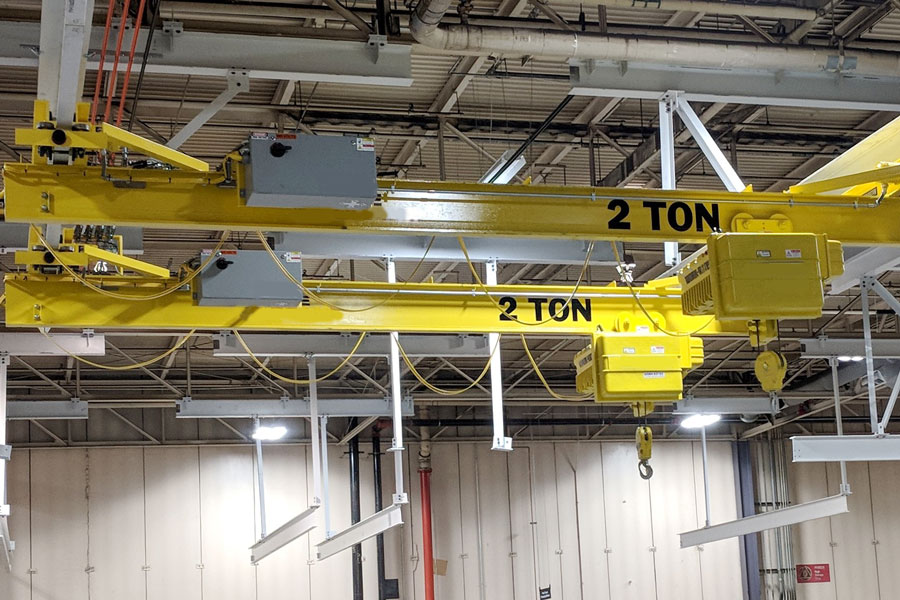
The driver must confirm the command language with the ground personnel before operating. If the command language is not agreed upon, the operation cannot be carried out. The driver must concentrate when operating and operate according to the commander’s signals. Before each operation, the driver should ring the bell to remind the personnel at the operation site to pay attention. At the same time, pay attention to the situation around the lifting objects. No one is allowed to stay under the hoisted object, under the arm, or in the area where the hoisting weight rotates. When the line of sight between the driver and the hoisted object may be blocked during hoisting, the driver should carefully inspect the on-site environment within the hoisting range and confirm the hoisting path of the hoisted object before hoisting. During the hoisting process, the signal contact with the commander should be strengthened.
At the same time, the commander should stand within the driver’s line of sight to give commands to avoid hoisting safety accidents due to blocked sight. If there are only drivers and hookers working on site, the driver must work closely with the hookers and work in unison. When moving and lifting heavy objects, you should only follow the signal given by the hooker. However, no matter who sends the “stop” signal, you should stop immediately.









